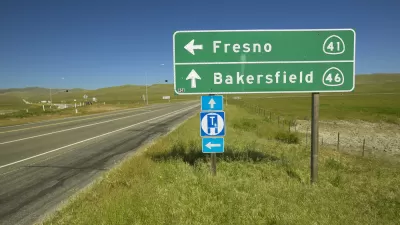No one expects the $8 billion to build any one single high-speed-rail system in the U.S. But the U.S., with its vast distances and low gas prices, is not Europe or Asia, and some question whether the investment will produce any substantial results.
"Some transportation researchers say a network of trains that can travel faster than 200 miles an hour is not feasible in the United States. They say the high price tag for building and operating a super-fast system will be the biggest deterrent.
And much like Amtrak's eight-year-old Acela Express, the only US high-speed rail, the trains would have to compete in a culture that prefers cars and planes.
"We have tremendous distances compared with Japan or Europe," said Carlos Schwantes, a professor of transportation studies at the University of Missouri-St. Louis. "We're just much bigger, and in so much of the country it's so low a population density that we'd have to ask the question: Is it worth spending our dollars for the infrastructure in those areas?"
High-speed rail systems, which have been slow to catch on here, took off abroad with the help of huge government subsidies and gas prices that were more than double what American drivers were paying when prices here peaked last year, transportation researchers say."
"Spread out over the country, $8 billion will be an important amount of money to advance the engineering and design," said Peter Gertler, national public transit services director with HNTB, an engineering and architectural firm that has been involved in the Midwest high-speed rail project. But going forward, he said, high-speed rail authorities "will need more local funding at the private and state levels."
Thanks to Bay Area Transportation News
FULL STORY: Will stimulus funds put rail on the fast track?

Alabama: Trump Terminates Settlements for Black Communities Harmed By Raw Sewage
Trump deemed the landmark civil rights agreement “illegal DEI and environmental justice policy.”

Study: Maui’s Plan to Convert Vacation Rentals to Long-Term Housing Could Cause Nearly $1 Billion Economic Loss
The plan would reduce visitor accommodation by 25% resulting in 1,900 jobs lost.

Planetizen Federal Action Tracker
A weekly monitor of how Trump’s orders and actions are impacting planners and planning in America.

Wind Energy on the Rise Despite Federal Policy Reversal
The Trump administration is revoking federal support for renewable energy, but demand for new projects continues unabated.

Passengers Flock to Caltrain After Electrification
The new electric trains are running faster and more reliably, leading to strong ridership growth on the Bay Area rail system.

Texas Churches Rally Behind ‘Yes in God’s Back Yard’ Legislation
Religious leaders want the state to reduce zoning regulations to streamline leasing church-owned land to housing developers.
Urban Design for Planners 1: Software Tools
This six-course series explores essential urban design concepts using open source software and equips planners with the tools they need to participate fully in the urban design process.
Planning for Universal Design
Learn the tools for implementing Universal Design in planning regulations.
Caltrans
Smith Gee Studio
Institute for Housing and Urban Development Studies (IHS)
City of Grandview
Harvard GSD Executive Education
Toledo-Lucas County Plan Commissions
Salt Lake City
NYU Wagner Graduate School of Public Service




























